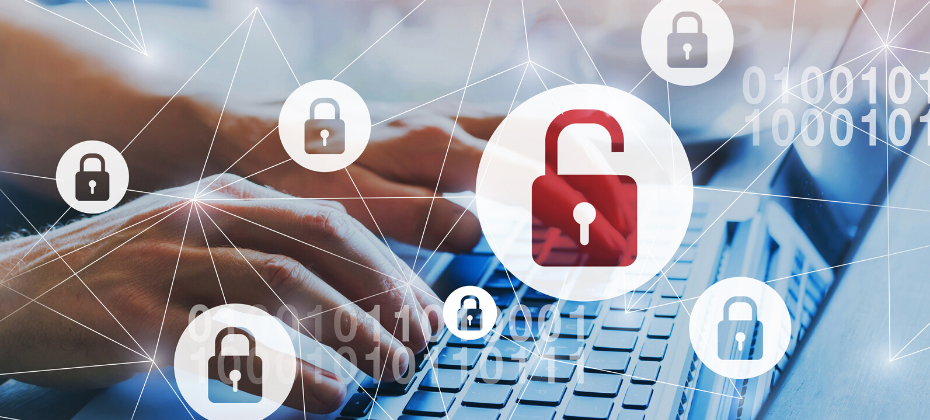Tag: identity theft

This post was updated in 2022. Fraud prevention can seem like a moving target. Criminals often shift from one scheme to the next, forcing organizations to play catch up to protect consumers’ identities and funds. But with the right technology, it’s possible to implement a fraud solution that provides protection and enhances the consumer journey. The pandemic fraud boom Government stimulus funds, COVID-19 testing and the loosening of business controls were a boon for criminals and levied an immense cost against businesses and consumers. Consumer fraud losses rose to $3.3 billion in 2020, up from $1.8 billion in 2019. The rapid increase in digital activity had two significant impacts. First, it shifted new account applications to the digital channel, where increased anonymity favors fraudsters by creating an environment where identity thieves could hide among the immense volume of applicants and monetize stolen personally identifiable information (PII). Second, it fueled account takeover (ATO) attacks by introducing digital “newbies” with unsophisticated password habits and limited ability to recognize and protect themselves from malware or social engineering, making them easy targets for credential theft. The return of old-school fraud Now that businesses and consumers are growing wise to some of the fraud schemes brought on by the COVID-19 pandemic, criminals are turning to new avenues, including tried-and-true methods like account opening and ATO fraud. New account fraud is expected to cost U.S. financial institutions $3.5 billion in 2021 alone. Fraud organizations will take the PII available and match it with automated tools to increase their efficiency and success rates while continuing with phishing and other schemes to gain new information that can fuel further attacks. Building a fraud solution Staying ahead of fraudsters may feel like a losing proposition but equipped with the proper fraud controls, you can enhance the customer experience, increase operational efficiency and protect against developing fraud schemes. With a fraud solution that uses multiple tools in concert, it’s possible to recognize, verify and holistically risk assess most consumers that pass through your portfolio. The right platform — ideally one that can call upon different services to perform each job — will enable your organization to flag suspicious activity, increase insight into large-scale attacks, track risky users and break down traditional internal silos. By coordinating efforts and adding multiple touchpoints to run both in the foreground and background, you can ensure the right friction is applied at the right time without diminishing the end-user experience. In fact, by improving your recognition tools, you can make the experience for recognized, legitimate customers even easier. To learn more about the potential impacts of traditional fraud and how your organization can leverage a fraud prevention solution to achieve your retention and growth goals, read our latest white paper or request a call. Read white paper Schedule a call

With consumers continuing to take a digital-first approach to everything from shopping to dating and investing, fraudsters are finding new and innovative ways to commit fraud. To help businesses anticipate and prepare for the road ahead, we created the 2022 Future of Fraud Forecast. Here are the fraud trends we expect to see over the coming year: Buy Now, Pay Never: Buy now, pay later lenders will see an uptick in identity theft and synthetic identity fraud. Beware of Cryptocurrency Scams: Fraudsters will set up cryptocurrency accounts to extract, store and funnel stolen funds, such as the billions of stimulus dollars swindled by criminals. Double the Trouble for Ransomware Attacks: Fraudsters will not only ask for a hefty ransom to cede control back to the companies they’ve hacked but also steal and leverage data from the hacked company. Love, Actually?: Romance scams will continue to see an uptick, with fraudsters asking victims for money or loans to cover fabricated travel costs, medical expenses and more. Digital Elder Abuse Will Rise: Older consumers and other vulnerable digital newbies will be hit with social engineering and account takeover fraud. “Businesses and consumers need to be aware of the creativity and agility that fraudsters are using today, especially in our digital-first world,” said Kathleen Peters, Chief Innovation Officer at Experian Decision Analytics in North America. “Experian continues to leverage data and advanced analytics to develop innovative solutions to help businesses prevent fraudulent behavior and protect consumers.” To learn more about how to protect your business and customers from rising fraud trends, download the Future of Fraud Forecast and check out Experian’s fraud prevention solutions. Future of Fraud Forecast Read Press Release

Over the last year and a half, strong trends emerged in how businesses and consumers interact online - specifically when validating identities and preventing fraud. We initially explored these trends at a global level, and now we've explored U.S.-specific insights into online security, the customer experience, and digital activities and operations. Download the North America findings report to learn more about business and consumer fraud and identity trends impacting the way we live, work, and interact. Review your fraud strategy

As stimulus-generated fraud wanes, we anticipate a return of more traditional forms of fraud, including account opening fraud. As businesses embrace the digital evolution and look ahead to responsible growth, it’s important to balance the customer experience with the risks associated with account opening fraud. Preventing account opening fraud requires a layered fraud and identity management strategy that allows you to approve good customers while keeping criminals out. With the right tools in place, you can optimize the customer experience while still keeping risk low. Download infographic Review your fraud strategy

Recently, I wrote about how Experian is assisting NASWA (National Association of State Workforce Agencies) with identity verification to help mitigate the spike in fraudulent unemployment insurance claims. Because of this I was not all that surprised when I found a letter in my mailbox from the Texas Workforce Commission with a fraudulent claim using my identity, inspiring me to follow up on this topic with a focus on fraud prevention best practices. Identity theft is on the rise According to Experian data analysis and a recent study on unemployment insurance fraud, at least 25% of new claims are a result of identity theft. This is 50 times higher than what we have traditionally seen in the highest ID theft fraud use case, new credit card applications, which generally amounts to less than 0.5% of new applications. Increasing digitization of the last few years—culminating in the huge leap forward in 2020—has resulted in a massive amount of information available online. Of that information, a reported 1.03 billion records were exposed between 2016 and 2020. There are currently approximately 330 million Americans, so on average more than three records per person have been exposed, creating an environment ripe for identity theft. In fact, a complete identity consisting of name, address, date of birth, and Social Security number (SSN) can be purchased for as little as $8. This stolen data is then often leveraged by both criminal rings who are able to perpetrate fraud on a large scale and smaller scale opportunists – like the ones in Riverside, CA leveraging access to identities of prison inmates. Fraud prevention through layered identity controls In the 20 years that I have been combatting ID theft both in the private and public sectors, I’ve learned that the most effective identity proofing goes beyond traditional identity resolution, validation, and verification. To be successful, you must take advantage of all available data and incorporate it into a layered and risk-based approach that utilizes device details, user behavior, biometrics, and more. Below, I outline three key layers to design an effective process for ID proofing new unemployment insurance claims. Layer 1: Resolve and Validate Identities Traditional identity data consists of the same basic information—name, address, date of birth, telephone number, and SSN—which is now readily available to fraudsters. These have been the foundation for ID proofing in the past and are still critical to resolving the identity in question. The key is to also include additional identity elements like email address and phone number to gain a more holistic view of the applicant. Layer 2: Assess Fraud Risk Determining an identity belongs to a real-life subject is not sufficient to mitigate the risk of ID theft associated with a new unemployment insurance claim. You must go beyond identity validation to assess the risk associated with their claim. Risk assessment risk falls into two categories – identity and digital risk. Identity Risk When assessing a claim, it’s important to check the identity for: Velocity: How often have you (or other states) seen the information being presented with this application? Has the information been associated with multiple identities? Recency of change: How long has the identity been associated with the contact information (phone, email, address, etc.)? Red flags: Has the subject been a recent victim of ID theft, or are they reported as deceased? Synthetic Identity: Are there signs that the identity itself is fictitious or manipulated and does not belong to a real-life person? Digital Risk Similar to the identity risk layer above, the device itself and how the subject interacts with the device are significantly important in identifying the likelihood a new claim is fraudulent. Device risk can be assessed by utilizing geolocation and checking for inconsistent settings or high-risk browsers, while behavioral risk might check for mouse movement, typing speed, or screen pressure. Layer 3: Verify Highest Risk Subjects The final stage in this process is to require additional verification for the highest risk claims, which helps to balance the experience of your valid subjects while minimizing the impact of fraud. Additional steps might include: Document verification: Scanning a government-issued ID (driver’s license, passport, or similar), which includes assessing for document security features and biometric comparison to the applicant. One-time passcode (OTP): It is key to deploy this sparingly only to phone numbers that have been associated with the subject for a significant time frame and incorporate checks to determine if it is at high risk (e.g., recently ported or forwarded). Knowledge-based verification (KBV): Leveraging non-public information from a variety of sources. By adding additional, context-based identity elements, it becomes possible to improve the three main objectives of most agencies’ identity proofing process – get good constituents through the first time, protect the agency and citizens from fraud, and deliver a smooth and secure customer experience in online channels. While there’s no quick fix to prevent unemployment insurance fraud, a layered identity strategy can help prevent it. Finding a partner that has a single, holistic solution empowers agencies to defend against unemployment insurance fraud while minimizing friction for the end-user, and preparing for future fraud schemes. To learn more about how you can protect your constituents and your agency from unemployment insurance fraud request a call today. Contact us

Preventing fraud losses requires an understanding of each individual fraud type—including third-party, first-party, synthetic identity, and account takeover fraud—and how they differ from one another. It’s only with a multi-layered fraud strategy that businesses can adequately detect and treat each type of fraud while maintaining the customer experience. When’s the last time you reviewed your existing fraud strategy? Download infographic Review your fraud strategy

It’s clear that the digital transformation we experienced this year is here to stay. While there are many positives associated with this transformation – innovation, new ways to work, and greater online connectedness – it’s important that we review the risks associated with these trends as well. In late 2019 and throughout 2020, Experian surveyed consumers and businesses. We asked about online habits, expectations for information security and plans for future spending. Unsurprisingly, about half of consumers think they’ll continue to spend more online in the coming year. Those same consumers now have a higher expectation for their online experience than before the onset of COVID-19. Hand-in-hand with the online activity trends come increased risks associated with identity theft and fraud as criminals find new chances to steal information. In response to both of these trends, businesses and consumers want a balance between security and convenience. Our latest trends report dives into the new opportunities 2020 has created for fraud, and the opportunities to prevent identity theft or manipulation and the associated losses while building stronger relationships. Download the full North America Trends Report for a look into North American trends over the last year and to learn how fraud prevention and positive customer relationships are actually two sides of the same coin. North America Trends Report

Every few months we hear in the news about a fraud ring that has been busted here in the U.S. or in another part of the world. In May, I read about a fraud ring based in Georgia and Louisiana that bought 13,000 stolen identities of children who were on the Louisiana Medicaid program and billed the government for services not rendered. This group defrauded the Medicaid program of more than $500,000. This is just one of many stories that we hear about fraud rings, and given the rapidly changing economic environment, now is the time for businesses to think about how to protect against fraud rings. There are a number of challenges that organizations may have when it comes to sharing trends and collaborations, understanding the ways to tie fraud rings together, creating treatments for identifying fraud rings and ways to store and catalogue fraud ring experiences so they can be easily recognized. The trouble with identifying fraud rings It’s important to understand the challenges that organizations have because they see the fraud rings through their own internal lens. Here are a few of the top things businesses should work on: Think like a fraudster. This will help businesses become more creative in their approach to fraud prevention. Facilitate internal collaboration. Share with in-organization partners. Sometimes this can be difficult due to organizational structure. Promote external collaboration. Intel-sharing groups are a great way for businesses to network within their industries and learn about the fraud that others are seeing. An organization that I’ve worked with in the past is the National Cyber Forensic and Training Alliance (NCFTA). Putting the pieces together How do businesses identify a fraud ring? There are three steps to get started. The first is reviewing and understanding the data. Fraudsters are lazy and want to replicate the process over and over again, and because of this there is always some piece of information that is repeated. It could be a name, an email address, device fingerprint, or similar. The second step is tying the fraud ring together. This is done by creating rules to help identify the trends. Having rules in place to identify fraud rings allows businesses to easily pull stats together for their leadership. Lastly, applying an acronym or name to the particular fraud ring and adding comments to the cases associated with a particular ring will help with post-investigation analysis. Learning from the past Before I became a consultant, I remember identifying a fraud ring that was submitting events with the same language pack and where the device fingerprint was staying consistent. Those events were being referred out for review and marked with the same note. At a post-mortem review, I was able to talk to the fraud ring we had seen, and it was easy to pull all events associated with this fraud ring because my team had marked the events with the same comments. Another fraud ring example happened a few years ago. A client called me and said that they were under a fraud attack and this fraud ring was rotating the email handle. I reviewed the data and came up with a rule to catch this activity. Fraud rings will use email handle rotation to help them keep track of accounts that are opened or what emails they used in the past. By coupling the email handle rotation with an email verification service like Emailage, this insight could be very telling. I would assume that when fraud rings use email handle rotation these emails are new and have just been created. These are just a few of the many fraud rings that I’ve encountered over the course of my career and I’m sure there will be a lot more in the years to come. The best advice I can give to anyone that reads this post is to understand the data that you are reviewing, look for anomalies within the data, ask questions and test your theories by running queries on the data that you’re reviewing. I would love to hear about the different fraud rings that you’ve encountered over your career. Stay safe. Contact us

This is the next article in our series about how to handle the economic downturn – this time focusing on how to prevent fraud in the new economic environment. We tapped two new experts—Chris Ryan, Market Lead, Fraud and Identity and Tischa Agnessi, Go-to-Market Lead, Decisioning Software—to share their thoughts on how to keep fraud out of your portfolio while continuing to lend. Q: What new fraud trends do you expect during the economic downturn? CR: Perhaps unsurprisingly, we tend to see high volumes of fraud during economic downturn periods. First, we anticipate an uptick in third-party fraud, specifically account takeover or ATO. It’ll be driven by the need for first-time users to be forced online. In particular, the less tech-savvy crowd is vulnerable to phishing attacks, social engineering schemes, using out-of-date software, or landing on a spoofed page. Resources to investigate these types of fraud are already strained as more and more requests come through the top of the funnel to approve new accounts. In fact, according to Javelin Strategy & Research’s 2020 Identity Fraud Study, account takeover fraud and scams will increase at a time when consumers are feeling financial stress from the global health and economic crisis. It is too early to predict how much higher the fraud rates will go; however, criminals become more active during times of economic hardships. We also expect that first party fraud (including synthetic identity fraud) will trend upwards as a result of the deliberate abuse of credit extensions and additional financing options offered by financial services companies. Forced to rely on credit for everyday expenses, some legitimate borrowers may take out loans without any intention of repaying them – which will impact businesses’ bottom lines. Additionally, some individuals may opportunistically look to escape personal credit issues that arise during an economic downturn. The line between behaviors of stressed consumers and fraudsters will blur, making it more difficult to tell who is a criminal and who is an otherwise good consumer that is dealing with financial pressure. Businesses should anticipate an increase in synthetic identity fraud from opportunistic fraudsters looking to take advantage initial financing offers and the cushions offered to consumers as part of the stimulus package. These criminals will use the economic upset as a way to disguise the fact that they’re building up funds before busting out. Q: With payment stress on the rise for consumers, how can lenders manage credit risk and prevent fraud? TA: Businesses wrestle daily with problems created by the coronavirus pandemic and are proactively reaching out to consumers and other businesses with fresh ideas on initial credit relief, and federal credit aid. These efforts are just a start – now is the time to put your recession readiness plan and digital transformation strategies into place and find solutions that will help your organization and your customers beyond immediate needs. The faceless consumer is no longer a fraction of the volume of how organizations interact with their customers, it is now part of the new normal. Businesses need to seek out top-of-line fraud and identity solutions help protect themselves as they are forced to manage higher digital traffic volumes and address the tough questions around: How to identify and authenticate faceless consumers and their devices How to best prevent an overwhelming number of fraud tactics, including first party fraud, account takeover, synthetic identity, bust out, and more. As time passes and the economic crisis evolves, we will all adapt to yet another new normal. Organizations should be data-driven in their approach to this rapidly changing credit crisis and leverage modern technology to identify financially stressed consumers with early-warning indicators, predict future customer behavior, and respond quickly to change as they deliver the best treatment at the right time based on customer-specific activities. Whether it’s preparing portfolio risk assessment, reviewing debt management, collections, and recovery processes, or ramping up your fraud and identity verification services, Experian can help your organization prepare for another new normal. Experian is continuing to monitor the updates around the coronavirus outbreak and its widespread impact on both consumers and businesses. We will continue to share industry-leading insights to help financial institutions differentiate legitimate consumers from fraudsters and protect their business and customers. Learn more About Our Experts [avatar user="ChrisRyan" /] Chris Ryan, Market Lead, Fraud and Identity Chris has over 20 years of experience in fraud prevention and uses this knowledge to identify the most critical fraud issues facing individuals and businesses in North America, and he guides Experian’s application of technology to mitigate fraud risk. [avatar user="tischa.agnessi" /] Tischa Agnessi, Go-to-Market Lead, Decisioning Software Tischa joined Experian in June of 2018 and is responsible for the go to market strategy for North America’s decisioning software solutions. Her responsibilities include delivering compelling propositions that are unique and aligned to markets, market problems, and buyer and user personas. She is also responsible for use cases that span the PowerCurve® software suite as well as application platforms, such as Decisioning as a ServiceSM and Experian®One.

For the last several years, as the global economy flourished, the opportunities created by removing friction and driving growth guided business strategies governing identity and fraud. The amount of profitable business available in a low-friction environment simply outweighed the fraud that could be mitigated with more stringent verification methods. Now that we’re facing a global crisis, it’s time to reconsider the approach that drove the economic boom that defined that last decade. Recognizing how economic changes impact fraud At the highest level, we separate fraud into two types; third party fraud and first party fraud. In simple terms, third party fraud involves the misuse of a real customer’s identity or unauthorized access to a real customer’s accounts or assets. First party fraud involves the use of an identity that the fraudster controls—whether it’s their own identity, a manipulated version of their own identity, or a synthetic identity that they have created. The important difference in this case is that the methods of finding and stopping third party fraud remain constant even in the event of an economic downturn – establish contact with the owner of the identity and verify whether the events are legitimate. Fraud tactics will evolve, and volumes increase as perpetrators also face pressure to generate income, but at the end of the day, a real person is being impersonated, and a victim exists that will confirm when fraud is taking place. Changes in first party fraud during an economic downturn are dramatically different and much more problematic. The baseline level of first party fraud using synthetic, manipulated and the perpetrator’s own identity continue, but they are augmented by real people facing desperate circumstances and existing “good” customers who over-extend while awaiting a turn-around. The problem is that there is no “victim” to confirm fraud is occurring, and the line between fraud (which implies intent) and credit default (which does not) becomes very difficult to navigate. With limited resources and pressures of their own, at some point lenders must try to distinguish deliberate theft from good customers facing bad circumstances and manage cases accordingly. The new strategy When times are good, it’s easier to build up a solid book of business with good customers. Employment rates are high, incomes are stable, and the risks are manageable. Now, we’re experiencing rapidly changing conditions, entire industries are disrupted, unemployment claims have skyrocketed and customers will need assistance and support from their lenders to help them weather the storm. This is a reciprocal relationship – it behooves those same lenders to help their customers get through to the other side. Lenders will look to limit losses and strengthen relationships. At the same time, they’ll need to reassess their existing fraud and identity strategies (among others) as every interaction with a customer takes on new meaning. Unexpected losses We’ve all been bracing for a recession for a while. But no one expected it to show up quite like it did. Consumers who have been model customers are suddenly faced with a complete shift in their daily life. A job that seemed secure may be less so, investments are less lucrative in the short term, and small business owners are feeling the pressure of a change in day-to-day commerce. All of this can lead to unexpected losses from formerly low-risk customers. As this occurs, it becomes more critical than ever to identify and help good customers facing grim circumstances and find different ways to handle those that have malicious intent. Shifting priorities When the economy was strong, many businesses were able to accept higher losses because those losses were offset by immense growth. Unfortunately, the current crisis means that some of those policies could have unforeseen consequences. For instance – the loss of the ability to differentiate between a good customer who has fallen on hard times and someone who’s been a bad actor from the start. Additionally, businesses need to revise their risk management strategies to align with shifting customer needs. The demand for emergency loans and will likely rise, while loans for new purchases like cars and homes will fall as consumers look to keep their finances secure. As the need to assist customers in distress rises and internal resources are stressed, it’s critical that companies have the right tools in place to triage and help customers who are truly in need. The good news The tools businesses like yours need to screen first party fraud already exist. In fact, you may already have the necessary framework in place thanks to an existing partnership, and a relatively simple process could prepare your business to properly screen both new and existing customers at every touchpoint. This global crisis is nowhere near over, but with the right tools, your business can protect itself and your customers from increased fraud risks and losses of all sorts – first party, stolen identities, or synthetic identities, and come out on the other side even stronger. Contact Experian for a review of your current fraud strategy to help ensure you’re prepared to face upcoming challenges. Contact us

Originally posted by Experian Global News blog At Experian, we have an unwavering commitment to helping consumers and clients manage through this unprecedented period. We are actively working with consumers, lenders, lawmakers and regulators to help mitigate the potential impact on credit scores during times of financial hardship. In response to the urgent and rapid changes associated with COVID-19, we are accelerating and enhancing our financial education programming to help consumers maintain good credit and gain access to the financial services they need. This is in addition to processes and tools the industry has in place to help lenders accommodate situations where consumers are affected by circumstances beyond their control. These processes will be extended to those experiencing financial hardship as a result of COVID-19. As the Consumer’s Credit Bureau, our commitment at Experian is to inform, guide and protect our consumers and customers during uncertain times. With expected delays in bill payments, unprecedented layoffs, hiring freezes and related hardships, we are here to help consumers in understanding how the credit reporting system and personal finance overall will move forward in this landscape. One way we’re doing this is inviting everyone to join our special eight-week series of #CreditChat conversations surrounding COVID-19 on Wednesdays at 3 p.m. ET on Twitter. Our weekly #CreditChat program started in 2012 to help the community learn about credit and important personal finance topics (e.g. saving money, paying down debt, improving credit scores). The next several #CreditChats will be dedicated to discussing ways to manage finances and credit during the pandemic. Topics of these #CreditChats will include methods and strategies for bill repayment, paying down debt, emergency financial assistance and preparing for retirement during COVID-19. “As the consumer’s credit bureau, we are committed to working with consumers, lenders and the financial community during and following the impacts of COVID-19,” says Craig Boundy, Chief Executive Officer of Experian North America. “As part of our nation’s new reality, we are planning for options to help mitigate the potential impact on credit scores due to financial hardships seen nationwide. Our #CreditChat series and supporting resources serve as one of several informational touchpoints with consumers moving forward.” Being fully committed to helping consumers and lenders during this unprecedented period, we’ve created a dedicated blog page, “COVID-19 and Your Credit Report,” with ongoing and updated information on how COVID-19 may impact consumers’ creditworthiness and – ultimately – what people should do to preserve it. The blog will be updated with relevant news as we announce new solutions and tactics. Additionally, our “Ask Experian” blog invites consumers to explore immediate and evolving resources on our COVID-19 Updates page. In addition to this guidance, and with consumer confidence in the economy expected to decline, we will be listening closely to the expert voices in our Consumer Council, a group of leaders from organizations committed to helping consumers on their financial journey. We established a Consumer Council in 2009 to strengthen our relationships and to initiate a dialogue among Experian and consumer advocacy groups, industry experts, academics and other key stakeholders. This is in addition to ongoing collaboration with our regulators. Additionally, our Experian Education Ambassador program enables hundreds of employee volunteers to serve as ambassadors sharing helpful information with consumers, community groups and others. The goal is to help the communities we serve across North America, providing the knowledge consumers need to better manage their credit, protect themselves from fraud and identity theft and lead more successful, financially healthy lives. COVID-19 has impacted all industries and individuals from all walks of life. We want our community to know we are right there with you. Learn more about our weekly #CreditChat and upcoming schedule here. Learn more

If you’ve been on the dating scene in the last few years, you’re probably familiar with ghosting. For those of you who aren’t, I’ll save you the trip to Urban Dictionary. “Ghosting” is when the person you’re dating disappears. No calls. No texts. No DMs. They just vanish, never to be heard from again. As troublesome as this can be, there’s a much more nefarious type of ghosting to be wary of – credit ghosting. Wait, what’s credit ghosting? Credit ghosting refers to the theft of a deceased person’s identity. According to the IRS, 2.5 million deceased identities are stolen each year. The theft often occurs shortly after someone dies, before the death is widely reported to the necessary agencies and businesses. This is because it can take months after a person dies before the Social Security Administration (SSA) and IRS receive, share, or register death records. Additionally, credit ghosting thefts can go unnoticed for months or even years if the family of the deceased does not check their credit report for activity after death. Opportunistic fraudsters check obituaries and other publicly available death records for information on the deceased. Obituaries often include a person’s birthday, address or hometown, parents’ names, occupation, and other information regularly used in identity verification. With this information fraudsters can use the deceased person’s identity and take advantage of their credit rating rather than taking the time to build it up as they would have to with other types of fraud. Criminals will apply for credit cards, loans, lines of credit, or even sign up for a cell phone plan and rack up charges before disappearing. Where did this type of identity theft come from? Credit ghosting is the result of a few issues. One traces back to a discrepancy noted by the Social Security’s inspector general. In an audit, they found that 6.5 million Social Security numbers for people born before June 16, 1901, did not have a date of death on record in the administration’s Numident (numerical identification) system – an electronic database containing Social Security number records assigned to each citizen since 1936. Without a date of death properly noted in the database, government agencies and other entities inquiring won’t necessarily know an individual is deceased, making it possible for criminals to implement credit ghosting schemes. Additionally, unreported deaths leave further holes in the system, leading to opportunity for fraudsters. When financial institutions run checks on the identity information supplied by a fraudster, it can seem legitimate. If the deceased’s credit is in good standing, the fraudster now appears to be a good customer—much like a synthetic identity—but now with the added twist that all of the information is from the same person instead of stitched together from multiple sources. It can take months before the financial institution discovers that the account has been compromised, giving fraudsters ample time to bust out and make off with the funds they’ve stolen. How can you defend against credit ghosting? Luckily, unlike your dating pipeline, there are ways to guard against ghosting in your business’ pipeline. Frontline Defense: Start by educating your customers. It’s never pleasant to consider your own passing or that of a loved one, but it’s imperative to have a plan in place for both the short and long term. Remind your customers that they should contact lenders and other financial institutions in the event of a death and continue monitoring those accounts into the future. Relatives of the deceased don’t tend to check credit reports after an estate has been settled. If the proper steps aren’t taken by the family to notify the appropriate creditors of the death, the deceased flag may not be added to their credit report before the estate is closed, leaving the deceased’s information vulnerable to fraud. By offering your customers assistance and steps to take, you can help ensure that they’re not dealing with the fallout of credit ghosting—like dealing with calls from creditors following up after the fraudster’s bust-out—on top of grieving. Backend Defense: Ensure you have the correct tools in place to spot credit ghosts when they try to enter your pipeline. Experian’s Fraud Shield includes high risk indicators and provides a deceased indicator flag so you can easily weed them out. Additionally, you can track other risk indicators like previous uses of a particular Social Security number and identify potential credit-boosting schemes. Speak to an Experian associate today about how you can increase your defenses against credit ghosting. Let's talk

As the holiday shopping season kicks off, it’s prime time for fraudsters to prey on consumers who are racking up rewards points as they spend. Find out how fraud trends in loyalty and rewards programs can impact your business: Are you ready to prevent fraud this holiday season? Get started today

What do movie actors Adam Sandler and Hugh Grant, jazz singer Michael Bublé, Russian literary giant Leo Tolstoy, and Colonel Sanders, the founder of KFC, have in common? Hint, it’s not a Nobel Prize for Literature, a Golden Globe, a Grammy Award, a trademark goatee, or a “finger-lickin’ good” bucket of chicken. Instead, they were all born on September 9, the most common birth date in the U.S. Baby Boom According to real birth data compiled from 20 years of American births, September is the most popular month to give birth to a child in America – and December, the most popular time to make one. With nine of the top 10 days to give birth falling between September 9 and September 20, one may wonder why the birth month is so common. Here are some theories: Those who get to choose their child’s birthday due to induced and elective births tend to stay away from the hospital during understaffed holiday periods and may plan their birth date around the start of the school year. Several of the most common birth dates in September correspond with average conception periods around the holidays, where couples likely have more time to spend together. Some studies within the scientific community suggest that our bodies may actually be biologically disposed to winter conceptions. While you may not be feeling that special if you were born in September, the actual differences in birth numbers between common and less common birthdays are often within just a few thousand babies. For example, September 10, the fifth most common birthday of the year, has an average birth rate of 12,143 babies. Meanwhile, April 20, the 328th most common birthday, has an average birth rate of 10,714 newborns. Surprisingly, the least common birthdays fall on Christmas Eve, Christmas Day and New Year’s Day, with Thanksgiving and Independence Day also ranking low on the list. Time to Celebrate – but Watch out! Statistically, there’s a pretty good chance that someone reading this article will soon be celebrating their birthday. And while you should be getting ready to party, you should also be on the lookout for fraudsters attempting to ruin your big day. It’s a well-known fact that cybercriminals can use your birth date as a piece of the puzzle to capture your identity and commit identity theft – which becomes a lot easier when it’s being advertised all over social media. It’s also important for employers to safeguard their organization from fraudsters who may use this information to break into corporate accounts. While sharing your birthday with a lot of people could be a good or bad thing depending on how much undivided attention you enjoy – you’re in great company! Not only can you plan a joint party with Michelle Williams, Afrojack, Cam from Modern Family, four people I went to high school with on Facebook and a handful of YouTube stars that I’m too old to know anything about, but there will be more people ringing in your birthday than any other day of the year! And that’s pretty cool.

For most businesses, building the best online experience for consumers requires a balance between security and convenience. But the challenge has always been finding a happy medium between the two – offering enough security that won’t get in the way of convenience and vice versa. In the past, it was always believed that one would always come at the expense of the other. But technology and innovation is changing how businesses approach security and is allowing them to give the maximum potential of both. Consumers want security AND convenience Consumers consider security and convenience as the foundation of their online experience. Findings from our 2019 Global Identity and Fraud Report revealed approximately 74 percent of consumers ranked security as the most important part of their online experience, followed by convenience. In other words, they expect businesses to provide them with both. We see this with how consumers are typically using the same security information each time they open a new digital account – out of convenience. But if one account is compromised, the consumer becomes vulnerable to possible fraudulent activity. With today’s technology, businesses can give consumers an easier and more secure way to access their digital accounts. Creating the optimal online experience More security usually meant creating more passwords, answering more security questions, completing CAPTCHA tests, etc. While consumers are willing to work through these friction-inducing methods to complete a transaction or access an account, it’s not always the most convenient process. Advanced data and technology has opened doors for new authentication methods, such as physical and behavioral biometrics, digital tokenization, device intelligence and machine learning, to maximize the potential for businesses to provide the best online experience possible. In fact, consumers have expressed greater confidence in businesses that implement these advanced security methods. Rates of consumer confidence in passwords was only 44 percent, compared to a 74 percent rate of consumer confidence in physical biometrics. Consumers are willing to embrace the latest security technology because it provides the security and convenience they want from businesses. While traditional forms of security were sufficient, advanced authentication methods have proven to be more reliable forms of security that consumers trust and can improve their online experience. The optimal online experience is a balance between security and convenience. Innovative technologies and data are helping businesses protect people’s identities and provide consumers with an improved online experience.